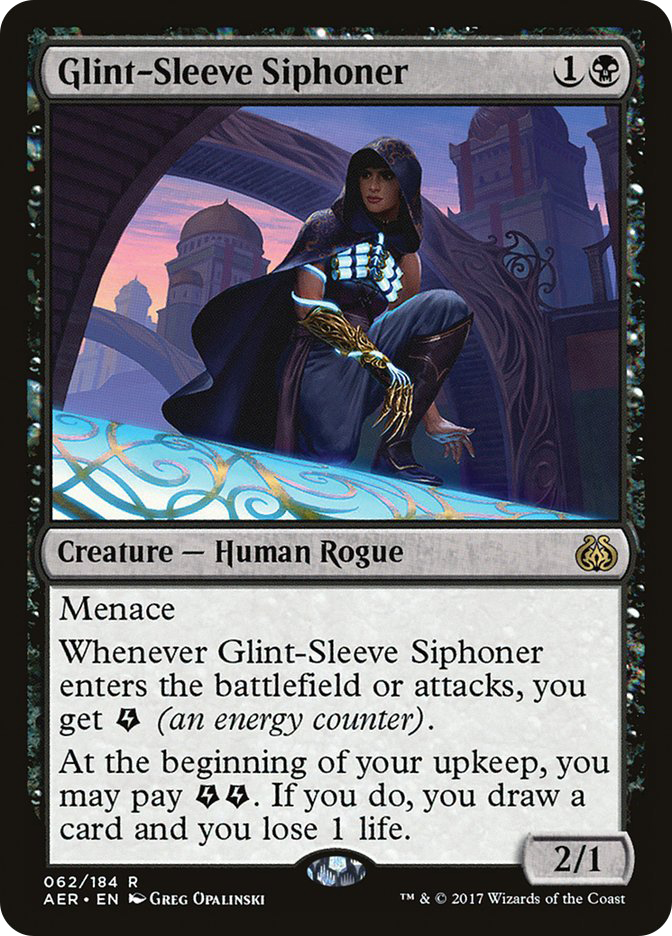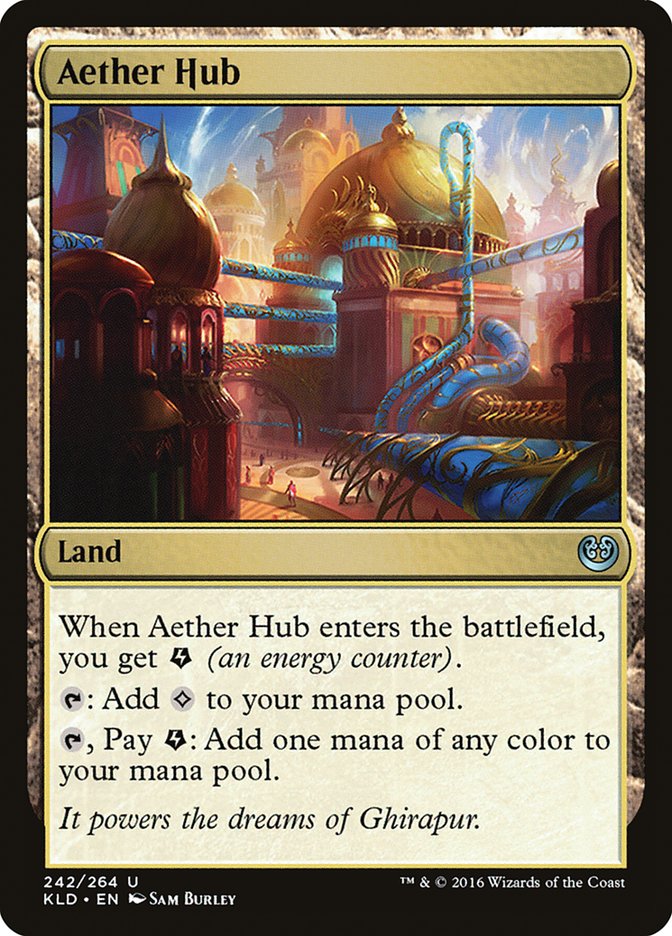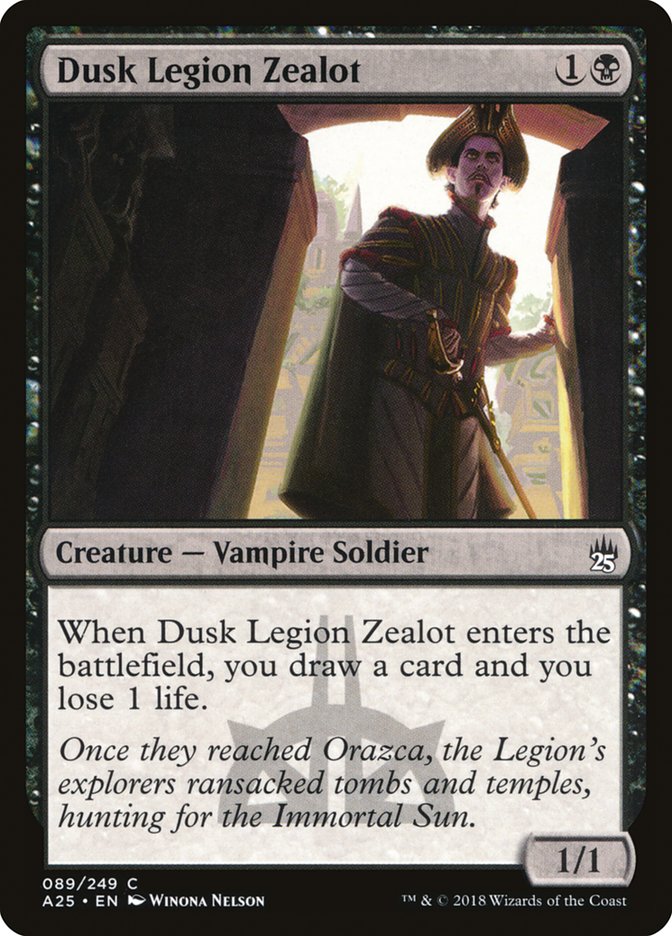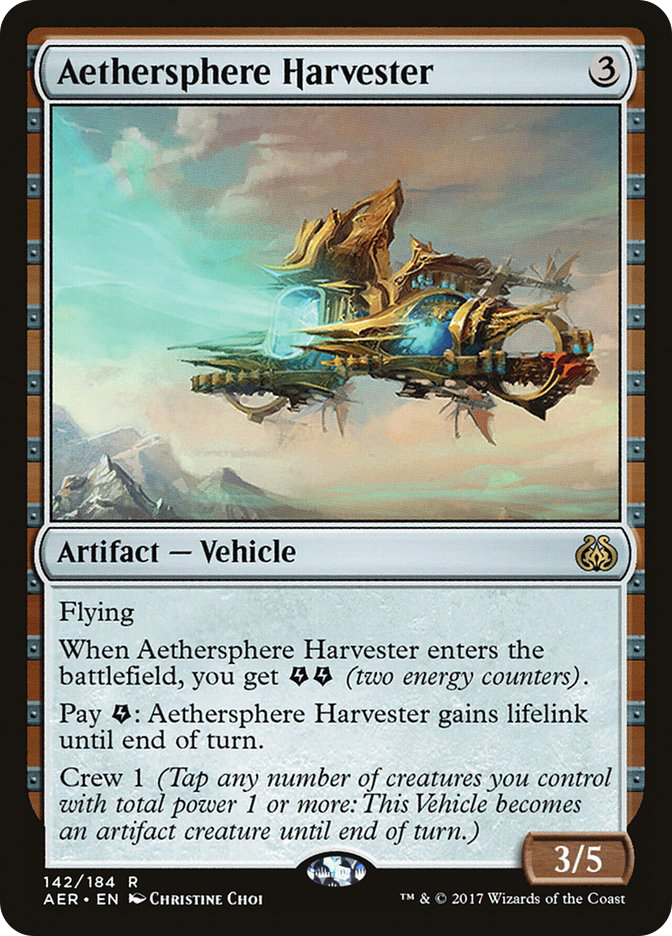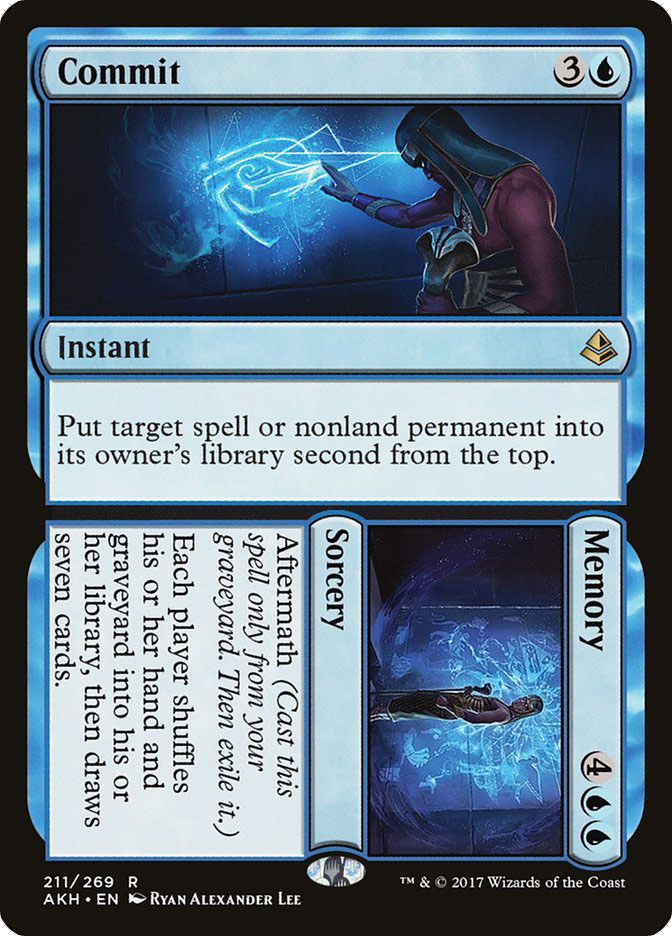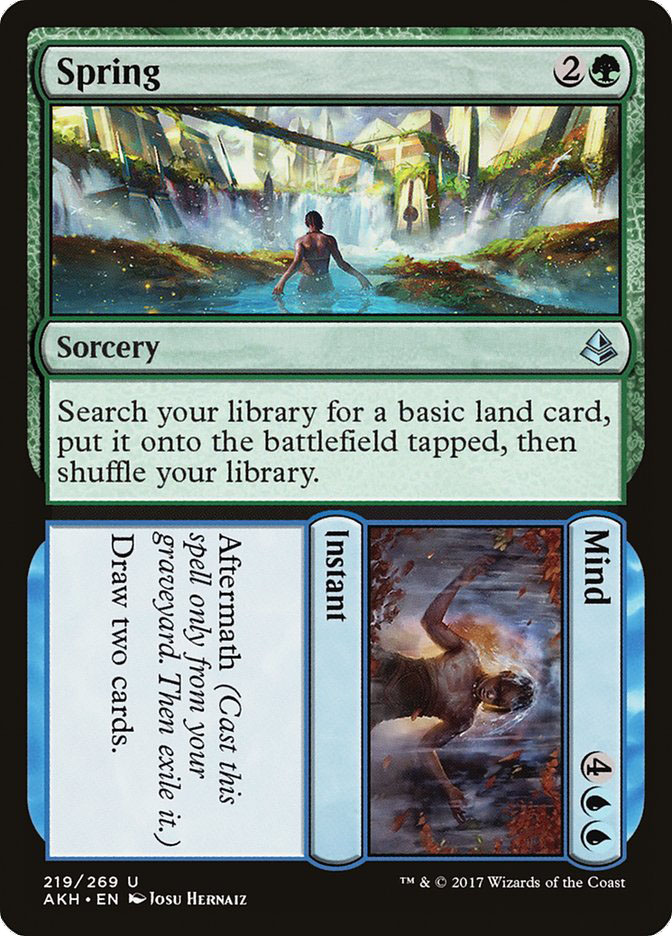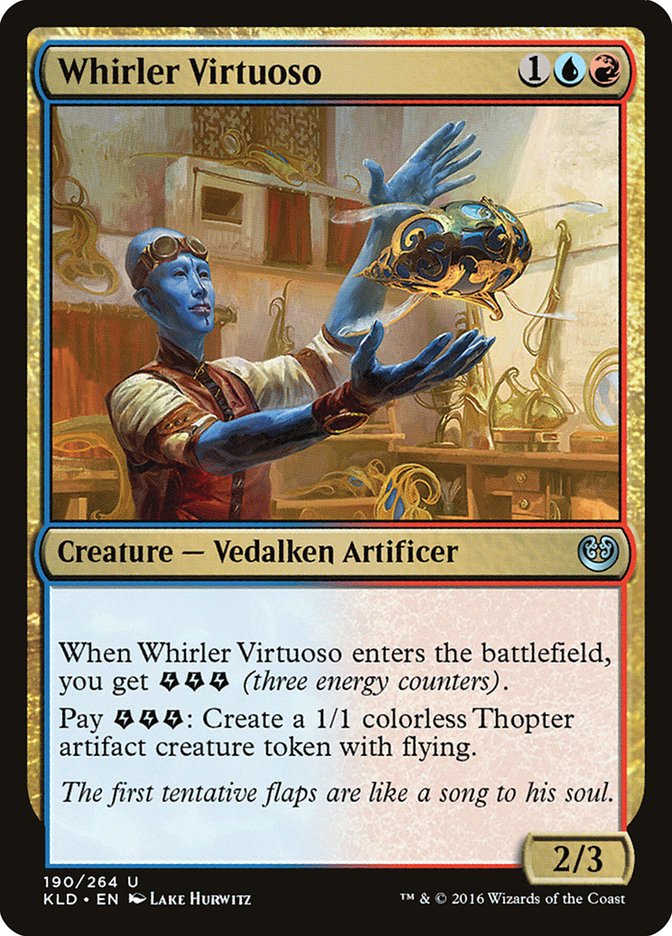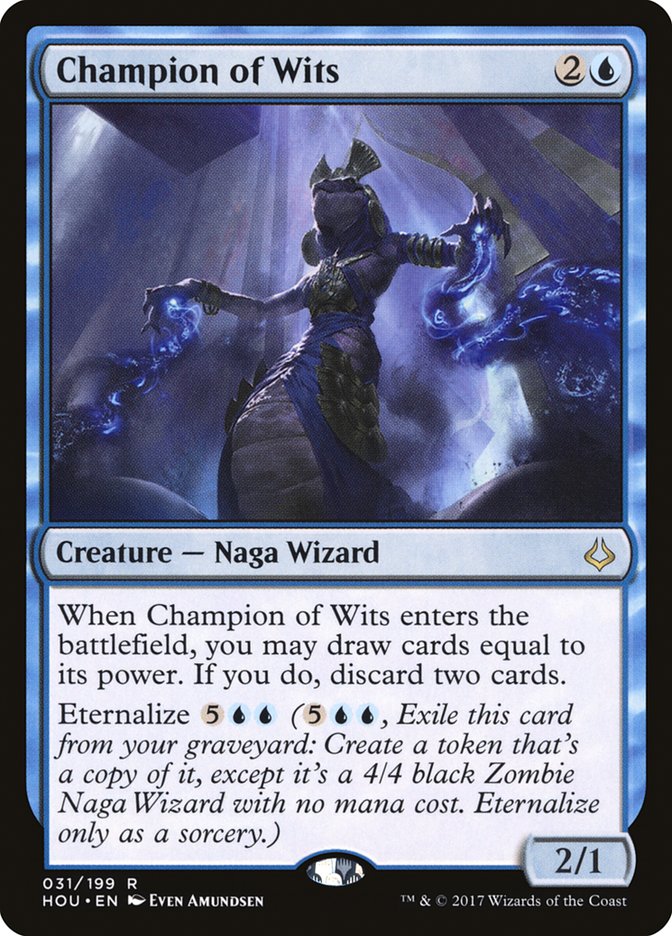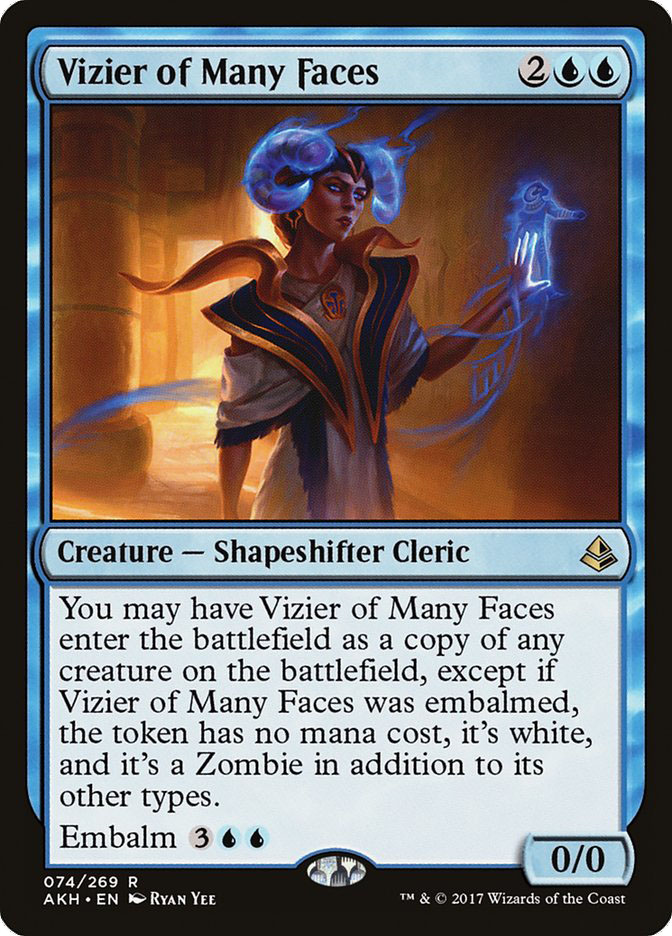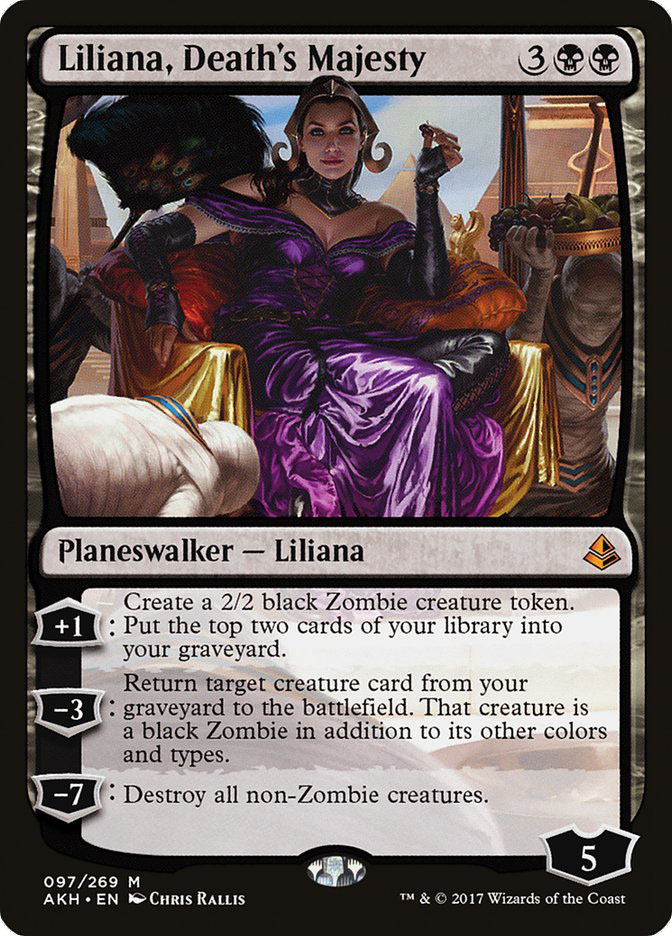A funny thing happened to me recently as I copy pasted a B/U Midrange list
from the internet
into Magic Online and fired up a Competitive Standard League.
Unfortunately, I can’t remember the winner’s name, but what I can say is
that I started 1-0 in that league on MTGO and I went about my life without
thinking about it at all.
It felt like weeks had gone by, but eventually I got the itch to play again
and that was this past Sunday, I finished the league 4-1 and I loved the
list. Little did I know that on the exact same day, Ryouixhi Yamamoto was
playing Standard in a Team Constructed Grand Prix in Kyoto with a
remarkably similar main deck and sideboard.
Oh, how’d he do? He won it ! Congratulations to Ryouixhi Yamamoto, Yuusuke Matsubara,
and Kazuki Takamura!
Creatures (20)
- 2 Gonti, Lord of Luxury
- 2 Torrential Gearhulk
- 4 Glint-Sleeve Siphoner
- 2 Walking Ballista
- 3 The Scarab God
- 4 Champion of Wits
- 3 Dusk Legion Zealot
Planeswalkers (2)
Lands (26)
Spells (12)

I’ve actually felt pretty good about my Standard preparation thus far, and
I’d happily take the Pepsi Challenge with my Grixis Energy list from a few
weeks ago against the best decks in Standard today. That said, it might be
close between Grixis Energy and B/U Midrange as to what the best Standard
deck actually is. What isn’t close, however, is that The Scarab God,
Glint-Sleeve Siphoner, and Aether Hub are overpowered when combined.
The most unique card in the list has to be Dusk Legion Zealot and I have to
say that it warms the cockles of my cold black heart. I’ve won a Grand Prix
before using Collected Company to hit
Elvish Visionary before just so I could generate a single card’s worth of
value when I return it from the graveyard with Rally the Ancestors.
Therefore, I can fully endorse using a slightly higher-costed Elvish Visionary
because it pairs beautifully with The Scarab God.
The person who created this deck is basically declaring that the thing they
care about the most is consistency, and I love it. You make the opponent
feel foolish when they lose the die roll and the opening turns are Bomat
Courier for them and Dusk Legion Zealot for you. If you take a snapshot of
that game, nobody can deny that you have a superior strategy.
I’ve written in the past about how decks with The Scarab God are incredibly
mana-hungry, and I still stand by that statement. My solution was to play
more lands, but this take on B/U Midrange is using an alternative method
with cheap cantrips. I don’t necessarily hate it, but I’m concerned about
how it may change the tempo of your average hand in midrange mirrors. One
of the most attractive elements of Dusk Legion Zealot is how it enables
Aethersphere Harvester as a sideboard option. Maybe I was looking at it all
wrong and instead of a weak Elvish Visionary, it’s actually just a weak
Rogue Refiner?
I’ve ranted and raved about Commit in the past, but it’s clear to me now
that what I
didn’t do was go far enough. It’s always tough during preparation to weigh
your opinions
correctly because sometimes you might get stuck if you only go by how
fancy, fun, or cool something is. My point is I correctly believed that
Commit was great, but I didn’t push myself to learn how many was too many.
Adding a second copy actually has helped me in a lot of nuanced ways. I’ve
always thought of Commit as a weaker version of Vraska’s Contempt, but they
both remove Hazoret the Fervent and The Scarab God from the battlefield, so
getting up to six of that type of effect is pretty sweet.
If you watch the best players play, they pull the trigger on Memory very
aggressively, and I’ve played multiple double-Memory games over the past
few weeks. I basically put my foot down on turn 3 with Champion of Wits and
discard spells to keep lands because I’m committed to hitting every land
drop while I spin my wheels and force the opponent to keep up.
A simple way to think about Memory is like this: you take the number of
cards in your hand and
the number of cards in your opponent’s hand and determine who benefits the
most. Let’s say Huey has five cards in hand and Reid has three cards in
hand, and they both have six lands during Reid’s main phase. If Reid casts
Memory here, he’s going to profit four cards (aka +4) and Huey is going to
profit two cards (aka +2), so although you’ve added this extra element of
randomness to the game, nobody can deny the fact that raw output for Reid
on his Memory generated him positive two cards of value for six mana.
I’ve seen Spring in some decks and people pay the aftermath often, but not
every game of Constructed is the buttery smooth curve out draw by both
decks and sometimes you have to take it to the streets, scrap around, and
try to win with whatever you’ve got lying around. Commit can be a
counterspell, but it can also make it so you grab your 20% chance to win in
a disadvantageous position, shuffle up the decks and get it up to as close
to 50/50 as you can, and when you’re winning by enough you just don’t cast
it! Sometimes my opponent is
compelled to tap out, and I use it to just give me seven chances to see a
removal spell to end the game outright.
Last week, as an example, my opponent cast Ixalan’s Binding on my
Torrential Gearhulk and my follow up was to cast River’s Rebuke. Torrential
Gearhulk entered the battlefield and targeted Memory, so the end result was
all my opponent’s nonland permanents got shuffled into their library and we
restarted the game with new hands. Don’t even get me started on how broken
it is when you get one of the fast Memory hands in a game where you win the
die roll and mulligan. If they miss one land drop or they can’t use mana as
a consequence of a misplaced enters the battlefield tapped land, it’s
lights out. When you curve out and spend all your mana, it’s not
inconceivable that you have one card in hand to their six and you already
used Commit to trade for a card’s worth of value so the aftermath is just
free and you rake them over the coals in terms of raw output card
advantage.
I started out hyping up Whirler Virtuoso as the three-drop of choice for
these decks, and it’s
possible that card will remain the premier option, but I have become more
and more impressed
by Champion of Wits. The thing I like the most about Champion of Wits is
its generally low
opportunity cost to put in your main deck and how pronounced its effect is
in the control
matchups. You get a threat you can play early that the enemy realistically
cannot counter or kill at a profit, mana or otherwise. It also provides
much needed deck manipulation. My whole Magic playing career, I underrated
a deck’s ability to improve the quality of its hand and how much that helps
stronger players beat weaker players. If I always have the right mix of
cards, how can I lose?!
At least that’s what I tell myself, but I still lose all the time to
people who prepared more than me, played better that day, or got
luckier.
In all seriousness, drawing two cards and discarding Fatal Push and
Vraska’s Contempt game
1 against a creatureless deck is a huge win. Champion of Wits gives you a
good late game and they superpower The Scarab God (which, admittedly,
doesn’t need a lot of help). They also make it more likely you draw your
sideboard cards, which is always an underrated aspect of Constructed play.
I often fear Champion of Wits may be underpowered in terms of rate when all
is said and done and that history will show us that Champion of Wits was a
liability in The Scarab God mirrors and the hot tech was to play zero the
whole time, but so far I’m in favor of Champion of Wits at least in B/U
Midrange.
Sultai Energy is gaining in popularity and it seems like a super sticky
matchup. When I
played it with the above B/U Midrange list, my first thought was “Wow!”
when I was down a game and went to sideboard. My second thought was “Wait,
who took my clone???”
I couldn’t believe that the deck designer didn’t have at least one copy of
Vizier of Many Faces. It’s just the best possible option against people who
gravitate towards Bristling Hydra in today’s removal-heavy environment.
It’s so low cost to have one of that card since it can be a huge source of
card advantage and buy you time against your most problematic cards.
I’m happy to see Liliana, Death’s Majesty seeing some play recently, as she
seems extremely well-positioned right now. The more Standard I play, the
more I realize how defined it is by cards like Vraska’s Contempt, and in a
world where Vraska’s Contempt is on the front page of the newspaper
everyday, it doesn’t make much sense to play expensive cards that match up
unfavorably against it. I like to have a couple planeswalkers in my
midrange decks so I’m never too invested in any one card type leaving me
weak to Duress, Negate, Essence Scatter, or Fumigate. When you play Liliana
and minus her to return a Glint-Sleeve Siphoner, you’re putting your
opponent in a terrible position; they now have to Vraska’s Contempt the
Liliana and use some type of hard removal on the Siphoner or else you begin
to draw two cards a turn, which obviously immediately breaks any type of
parity in a mirror match. This also gives you access to a nut draw which
I’m personally fond of:
- Turn 3 Champion of Wits discarding Torrential Gearhulk
- Turn 4 Vraska’s Contempt or Commit
-
Turn 5 Liliana, Death’s Majesty minus to return Torrential Gearhulk
and print up to twelve mana worth of value and have a dominant
battlefield
I feel a little guilty, almost like a broken record, as I talk about The
Scarab God and the absolute
stranglehold it has on Standard, but this is the world we live in. Card
choice and in game
decisions do matter, and I think it’s a wonderful time to be alive for
spikes. If you’re reading my
articles with regularity, then you’re the most competitive type of player
there is and that means your goal is to win whatever tournament you play
in. When my goal is to win, I always want to play the best deck and that
means learning it to the best of my ability. These games are tough, so it
won’t be easy, but I believe as long as The Scarab God is legal, it won’t
be a test of “Should I play The Scarab God?” but instead “What should I
play alongside The Scarab God?”
I’ve been exhausting myself trying every combination of cards and often it
changes from week to week so it’s a little bit like trying to predict the
weather. Unfortunately, I’m not intimately familiar with all the Dominaria cards just yet, so it’s possible there are some real
game changers in there, but I’m not exactly optimistic.
But really, when The Scarab God is legal, what else does one really need?



